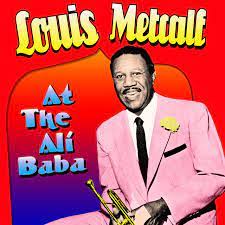
Daily Dose Of Jazz…
Louis Metcalf was born on February 28, 1905 in Webster Groves, Missouri. As a youth he first trained on the drums but switched over to cornet permanently. As a teenager in St. Louis, Missouri he played with Charlie Creath.
Moving to New York City in 1923 he participated in the fertile jazz scene there, playing with Willie The Lion Smith, Jelly Roll Morton, Benny Carter and King Oliver. In 1926, Duke Ellington hired Metcalf to play in his seminal orchestra, where his mellow tone contrasted with that of Bubber Miley. In the 1930s, he led his own bands and also joined Fletcher Henderson’s band.
1946 saw Louis moving to Montreal, Canada where he formed the International Band, the first to play the nascent bebop style in Canada. Under his leadership the Café Saint-Michel was the hub of the jazz scene in Montreal for a few years, with local musicians such as the young Oscar Peterson and visiting Americans Art Pepper, Fats Navarro and Sonny Rollins among others sitting in with the band.
A drug bust prompted Metcalf to return to New York City in 1951. He released an album titled I’ve Got The Peace Brother Blues in 1966, where he demonstrated that his style had indeed evolved since his days with Ellington.
Becoming less active after falling ill in 1968, trumpeter Louis Metcalf transitioned on October 27, 1981.
More Posts: bandleader,history,instrumental,jazz,music,trumpet
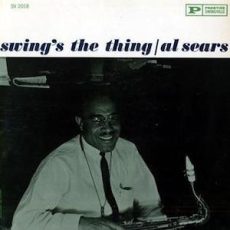
Daily Dose Of Jazz…
Albert Omega Sears was born February 21, 1910 in Macomb, Illinois. His first major gig came in 1928 when he replaced Johnny Hodges in Chick Webb’s ensemble. The Thirties had him first playing with Elmer Snowden, then led his own groups between 1933 and 1941.
In the early 1940s he joined Andy Kirk and Lionel Hampton before he became a member of Duke Ellington’s Orchestra in 1944, replacing Ben Webster. He remained with Ellington until 1949, when first Jimmy Forrest and then Paul Gonsalves took over his chair. He played with Johnny Hodges in 1951–52 and recorded the tune Castle Rock with him. The tune became a hit but unfortunately was released under Hodges’s name.
Sears was in Alan Freed’s band when Freed did live shows, being introduced as “Big Al Sears”. He played as a studio musician on R&B albums in the 1950s and recorded two albums for Swingville in 1960. He also owned several record labels, including Arock, Serock, and Gator.
Tenor saxophonist and bandleader Al Sears, who recorded four albums as a leader, transitioned on March 23, 1990 in St. Albans, New York at the age of 80.
More Posts: bandleader,history,instrumental,jazz,music,saxophone
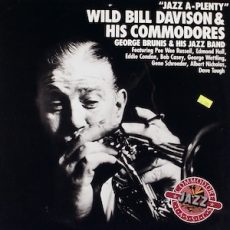
Daily Dose Of Jazz…
Robert Hanley Casey was born in Johnson County, Illinois on February 11, 1909 and learned to play banjo and guitar as a child, playing both in regional ensembles in the Midwest. He didn’t pick up the bass until he was twenty and continued as a guitarist for some time after.
The mid-1930s saw him playing in NBC radio ensembles and working with Wingy Manone. In 1939 Bob joined Muggsy Spanier’s Ragtimers band but the group soon split, after which he played with Charlie Spivak, Brad Gowans, Eddie Condon, Miff Mole, and Joe Marsala. He played extensively on radio with several of these ensembles.
Casey was also a prolific session bassist, recording with Wild Bill Davison, Bobby Hackett, Cliff Jackson, Max Kaminsky, Eddie Edwards, Bud Freeman, Pee Wee Russell, Georg Brunis, George Wettling, Ralph Sutton, Joe Sullivan, and Boyce Brown in the 1940s and 1950s.
Relocating to Florida in 1957, he played with the Dukes of Dixieland. By the 1970s he was playing only occasionally. Double bassist Bob Casey transitioned on April 9, 1986, in Marion, Illinois.
More Posts: bass,history,instrumental,jazz,music
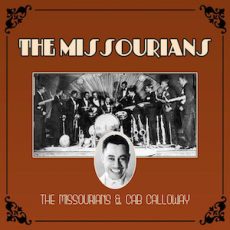
Daily Dose Of Jazz…
William Thornton Blue was born on January 31, 1902 in St. Louis, Missouri and grew up playing in local bands in his hometown, where his father was a part-time music instructor.
He played with Wilson Robinson’s Bostonians, a territory band, where he was introduced to the rigors of the road. In 1924 he worked with Charlie Creath, then went to New Orleans, Louisiana and joined Dewey Jackson in the middle of the 1920s. This association eventually took Blue back to St. Louis as part of the touring schedule but Blue didn’t stay long. Heading to New York City later that decade he had an extended stint working with Andrew Preer’s Cotton Club Orchestra. This led to a European tour as a member of Noble Sissle’s ensemble.
Remaining for a brief time in Paris, France he collaborated with bassist John Ricks. When Bill returned to New York City, he joined The Missourians, led by Cab Calloway, then worked with pianist Luis Russell.
Due to failing health he played very little in the late Thirties and afterwards. Clarinetist and alto saxophonist William Thornton Blue, sometimes credited as Bill Blue, transitioned in 1968 after spending the last several years of his life in a New York sanatorium.
More Posts: clarinet,history,instrumental,jazz,music,saxophone
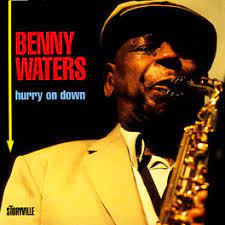
Daily Dose Of Jazz…
Benjamin Waters was born on January 23, 1902 in Brighton, Baltimore, Maryland. He began on organ, then switched to clarinet and later added saxophone. The first band he joined in 1918 was Charly Miller’s band. In 1922 he attended the New England Conservatory of Music where he gave lessons to Harry Carney.
From 1926 until 1931, Waters was a member of Charlie Johnson’s band. He would later work with King Oliver, Fletcher Henderson, Claude Hopkins, and others. During these years he made several recordings with King Oliver and Clarence Williams.
In the years 1941 and 1942 he played with the Jimmie Lunceford Orchestra, and later in the 1940s with Roy Milton. He went on to form his own band, playing at the Red Mill in New York City. After this stint in the city he moved to California for four years.
From 1952 to 1992 Benny lived in Paris, France. In 1996, he received the Legion of Honour from the French Ministry of Culture. He continued to perform regularly up to his 95th birthday.
Saxophonist and clarinetist Benny Waters, who became blind in 1992 due to cataracts, transitioned on August 11, 1998 in Columbia, Maryland.
More Posts: bandleader,clarinet,history,instrumental,jazz,music,saxophone



